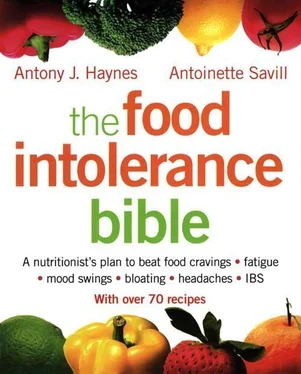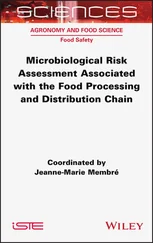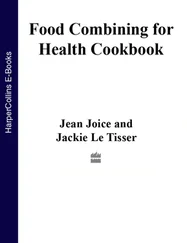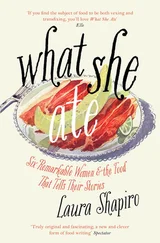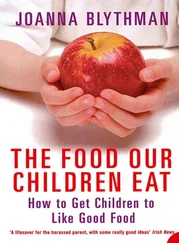Anaphylaxis is an extreme physical reaction – the reason for which is not fully understood – that often requires adrenaline to counter the extreme stress-reaction caused in the body.
Allergy Is on the Increase
While allergies affect a far smaller proportion of the population than food intolerances, their effects are not insignificant. Unfortunately, allergies are on the increase – some 50 million Americans suffer from some type of allergy on a yearly basis. According to the American Academy of Allergy, Asthma and Immunology, allergy is ranked as the sixth leading cause of chronic disease today, at a cost of $18 billion a year. It is believed that the evidence from the UK is very similar to that in the US. Two recent estimates of the prevalence of allergy in the US were 9 per cent and 16 per cent, and the prevalence of the two most common allergies, atopic dermatitis (dry skin, similar to eczema) and allergic rhinitis (persistent runny nose), have been increasing since the mid- to late 1980s.
Food Intolerance Is Escalating, Too
As mentioned, food intolerance is the name for reactions mediated by immunoglobulin G (IgG). These reactions can manifest up to 72 hours after exposure, making the trigger food or substance much more difficult to identify. However, it is worth noting that some food intolerance reactions are not typically mediated by immune reactivity.
While people who suffer from IgG reactions rarely need immediate medical attention, the symptoms can certainly reduce their quality of life and cause longterm illness. The proportion of the population who suffer from at least one food intolerance is as much as 45 per cent (and that may be a conservative estimate), making it a significant issue in the nation’s health.
Evidence shows that the prevalence of food intolerance is escalating, but because the methodology used to analyse food intolerance is more recent than that for IgE allergy, there are no hard-and-fast figures to compare with the prevalence of decades ago.
At least 45 per cent of the population suffer from food intolerance.
A Wide Range of Symptoms
The range of food intolerance symptoms is as long as it is diverse. You would hardly believe that so many symptoms could be attributable to food intolerance. Simply having interviewed thousands of clients who have avoided certain foods for periods of time and then reintroduced them into their diets, and having listened to their observations about their symptoms, confirms the existence of food intolerance. There is also much evidence today based on the evidence of immunological testing that food intolerance does exist (although, as stated above, not all food intolerances are mediated by immune IgG activity). In spite of all the evidence, however, there are some who refuse to acknowledge food intolerance as an issue, and in particular as a reaction that can cause mental symptoms. This is an issue that I would like to clear up right now, so the rest of this Introduction is devoted to showing you evidence, some of it many years old and some of it very recent, that proves the existence and relevance of food intolerance to a wide range of symptoms.
The Author’s Personal Experience
I have suffered with food intolerances myself. I have had a gluten intolerance for years, as measured on more than one occasion with lab tests. To this day I am unable to eat wheat without experiencing unpleasant symptoms. I also have a soy intolerance, this one tested by IgG analysis, that causes sinusitis which only resolves when soy is avoided and which re-emerges when soy is eaten again. I could have figured out what the foods were by observation if I had known what to look for! In hindsight, the reason for these adverse reactions is obvious since I committed the first sin in terms of food intolerance: eating a lot of a certain food on a regular and repetitive basis. You will discover the reasons behind your own intolerances later in this book.
That food can cause adverse symptoms has been appreciated for thousands of years. Herodotus in 460 BC was reported to have said that ‘One man’s meat is another man’s poison.’ Hippocrates also identified that stomach upset and skin hives could be caused by drinking milk. It is also something that has been acknowledged and appreciated in medical and academic papers for over a hundred years, but this peer-reviewed literature has not always been given the credence it deserves. It is because of this lack of appreciation for what might be causing a variety of symptoms that uncertainty has been created, and an assumption that such-and-such a symptom must be due to something else, like stress. However, we are now in an age where food intolerance affects at least 45 per cent of the population and it has become such an issue that people are seeking out the answers for themselves. Since a food intolerance does not represent a pathology for which there is a medical treatment – by contrast, a food allergy has the potential to do much harm and does require medical attention – there has been much less medical attention focused on this subject. With the march of the masses who suffer from adverse reactions, however, the development of tests, research and investigations into the topic now provide previously unheralded recognition that food intolerance is very real and, unfortunately, a significant factor in many people’s health.
I predict, unwillingly and hoping that I will be proven wrong, that with modern lifestyles and our food supply being what they are, food intolerance will increase in the coming years, making it a major cause of unpleasant symptoms for decades to come.
Putting Food Intolerance into Context
However, to place the blame entirely on food intolerance does not properly put the increasing prevalence into context. This assumes that the food is the problem, just like the bacteria is the problem for which the solution is antibiotics. In this example, the germ-warfare approach misses the point which Louis Pasteur, founder of modern-day antibiotics, regretted in his latter days when he said, ‘C’est le terrain, pas le germ’ which, translated means: It is the host (i.e., the environment or the body) and not the germ (bug, microbe, bacterium, virus) that is important.
In this way, those who believe that stress causes the symptoms have a point, because this can create imbalances within the ‘host terrain’ (i.e. your body) that permit or make it react inappropriately to foods.
In later chapters you will learn about the connections between stress and food intolerance as well as other underlying issues. These also include imbalances within the digestive system in terms of maldigestion and the graphically-termed ‘leaky gut syndrome’, and imbalances in the micro-organisms living within our intestines, from yeasts to bacteria and parasites. You will be shown how to address your food intolerances as well as how to address the underlying imbalances. However, it is worth noting that this is not a book designed to assess allergies that require medical attention. More on this in Chapter 1.
Proof of Food Intolerance
There have been observations that food can elicit adverse reactions since the days of Hippocrates. As you will find out in Chapter 1, there are potentially a vast range of symptoms that can be caused by food intolerance reactions. These can be divided into two broad categories: physical (especially digestive) and mental/emotional/behavioural. Since the nature of the symptoms is so diverse, there could potentially be other contributory factors, too, and it is this lack of specificity which has cast some doubt about the phenomenon of food intolerance.
Читать дальше
